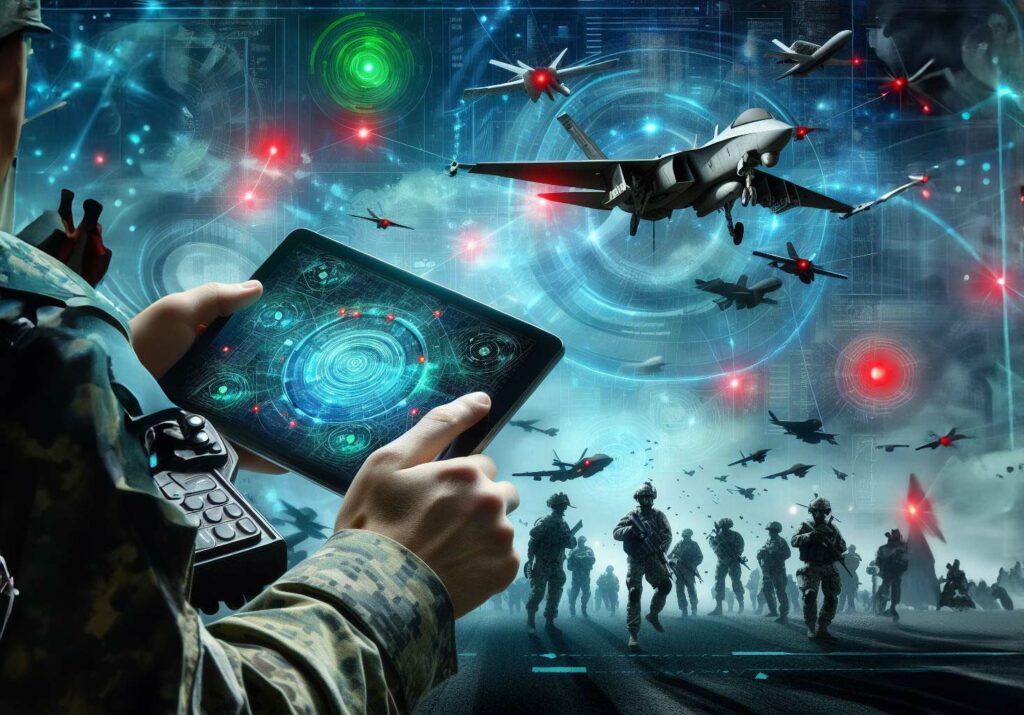
Electronic warfare has become a crucial aspect of modern military operations, with aircraft playing an essential role. This long ellipse from sky to cyberspace describes a world where conflicts are no longer limited to traditional terrains, but extend into the electromagnetic spectrum. In this article, we explore the integration of advanced military aircraft technology into electronic warfare, highlighting its importance and implications for armed forces worldwide.
The Electromagnetic Spectrum: The Invisible Arena of Modern Warfare
Electronic warfare involves the strategic use of the electromagnetic spectrum to disrupt, deceive or neutralize enemy capabilities, while protecting friendly systems from similar attacks. It comprises three main areas: electronic support measures, electronic countermeasures and electronic protection measures.
Military aircraft are often equipped with sophisticated devices that enable them to transmit, receive and manage electromagnetic signals with unrivalled precision and speed. On-board systems have evolved to detect, interpret and even predict enemy actions, giving armed forces a considerable tactical advantage.
Air Command Challenges in Electronic Warfare
The role of military aircraft in electronic warfare is complex and multi-dimensional. They must be capable of carrying out a variety of missions, such as:
Suppression of Enemy Air Defenses (SEAD): This involves neutralizing the adversary’s air defense systems using a combination of offensive and defensive tactics.
Electronic Intelligence (ELINT): The collection and analysis of electronic signals to monitor enemy movements and intentions.
Electronic Jamming and Deception: Integrating techniques to reduce the effectiveness of enemy information and communication systems.

Evolving technologies and the future of airborne electronic warfare
As technology advances, military aircraft continue to adopt new enhancements to stay at the forefront of the electronic warfare theater. The inclusion of artificial intelligence and machine learning in onboard systems promises faster, more accurate analyses of potential threats. What’s more, the miniaturization of electronic components means that these systems can be more effectively integrated into various types of aircraft.
On the other hand, the advent of UAVs has introduced a new dimension in electronic warfare, offering the possibility of conducting operations without risking the lives of pilots, while providing the ability to loiter for long periods on surveillance or jamming missions.
The contribution of military aircraft to electronic warfare is a subject of seemingly infinite discovery and advancement. Increased capabilities in surveillance, jamming and threat management underline the importance of these aircraft in modern defense strategy. As technology continues to evolve, military aircraft remain at the forefront of protecting national interests and destabilizing enemy capabilities in this connected but invisible world. For our readers, amateurs and professionals alike, we hope this overview offers insight into the interconnection between aviation and cyber warfare, as well as an appreciation for the complex strategies our air forces deploy every day to maintain peace and security.
Electronic warfare remains as fascinating as it is crucial, and its integration with military aircraft is a testament to human ingenuity in the face of global security challenges. As witnesses to this revolutionary era, let’s continue to follow the developments that will shape future combat and air defense strategies. Together, we can better understand and appreciate the challenges of electronic warfare and the importance of military aircraft in this field.
War Wings Daily is an independant magazine.